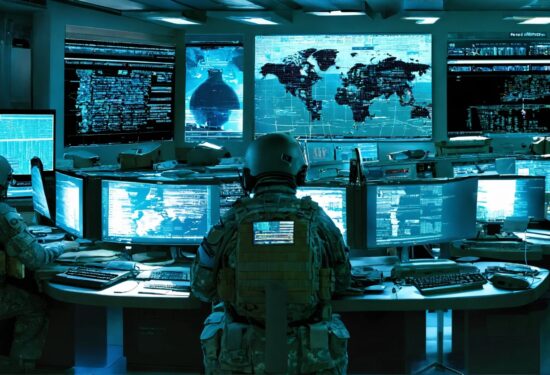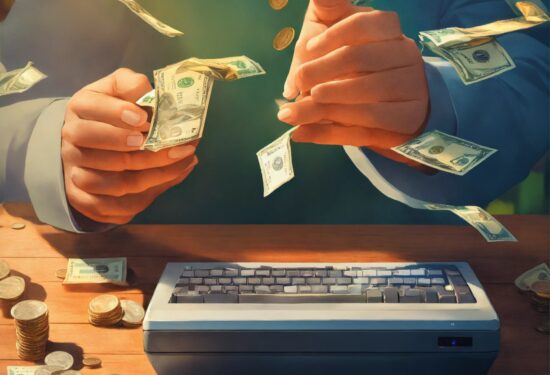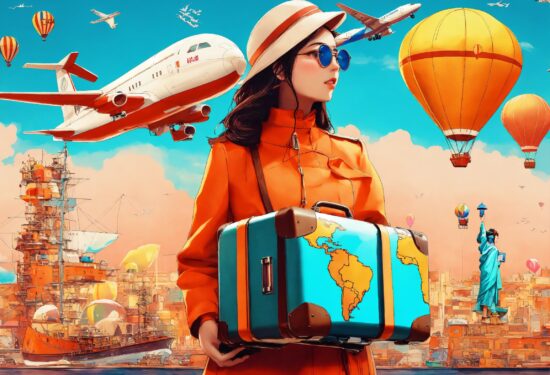Cybersecurity Threats Against the Healthcare Industry
The healthcare industry is known for being one of the primary targets for cybercriminals, and by 2020 it was ranked as the seventh most attacked sector of Cybersecurity Threats. Unfortunately, hospitals, clinics, and medical laboratories have experienced a rise in these attacks in the last two years. And with the recent pandemic, cybercriminals took advantage of this event and launched many of their destructive plans.

These attacks are mainly motivated by financial gain. They either sell the stolen data or request ransom money from their victims to enable them back access to their data. For instance, at the end of 2020, a major cyber-attack was conducted on Universal Health Services in the United States.
Around 400 locations have had their computers compromised which resulted in staff manually recording patients’ information with a pen and paper.
All these successful attacks could have been eliminated if medical practices and hospitals update their IT systems as well as frequently educating their staff.
So, what are the 5 major cyber threats the healthcare industry faces?
5 Major Cybersecurity Threats
1. Ransomware: This type of threat is a form of malware that encrypts all data on electronic devices (mobiles, computers, etc.) and prevents the owner from accessing it. Next, the owner will receive a message stating that they will be able to gain back access if a sum of money is forwarded.
The average sum requested from healthcare institutions is $131,304 but this deal comes with no guarantees. This type of threat is one of the most common kinds of cyber-attacks that the healthcare industry suffers from. In May 2021, almost 48 ransomware attacks have targeted hospitals in the US alone and 82 attacks globally from the beginning of the year (HHS Cybersecurity Program Ransomware Trends 2021).
Earlier this month, a ransomware attack was made on the University Medical Center of Southern Nevada, exposing a number of sensitive data of patients, which then was publicly published on the internet. Thankfully, this attack did not affect patient’s treatment, but the situation is still being resolved to this day.
2. Insider Threat: An inside threat refers to employees or individuals with permitted access that may potentially damage an information management system by disrupting, revealing, or altering sensitive information. According to Verizon’s 2021 Data Breach Investigations report, insiders are thought to be responsible for roughly 22% of security issues, and employees exploiting their access credentials is relatively common in the healthcare industry. Malicious insiders typically commit this act for financial gain 64% of the time and 17% do it for their own amusement.
This past April, a certified nursing assistant working in a senior living center is facing several identity theft charges after stealing money from six of her elderly residents. These incidents could occur if the proper protocols are not set in place.
3. Bad Bots: In the cyber world, there are Bad Bots and Good Bots. Bad Bots are programmed to carry out a wide range of malicious tasks. They are usually utilized by scammers, cybercriminals, and other malicious parties engaged in various unlawful operations and who work in an evasive manner. In 2020, 8% of cyber-attacks on the healthcare industry were made through Bad Bots resulting in healthcare websites experiencing a 372% increase of Bad Bot traffic from September 2020. With the availability of the Covid-19 vaccine, any hospital or pharmacy providing it can be subjected to this attack.
This resulted in Bot activity peaking at 12,000 requests per hour. These Bots can disrupt the supply chain for health institutions and pharmacies participating in the vaccine distribution, they contaminate the network and make it onerous for genuine users to book an appointment. These Bad Bots have caused reputational and financial harm for institutions especially the United States who is the main victim to this type of attack with 37.2%.
4. DDoS Attacks: This kind of cyber-attack is developed to prevent users from accessing their network and websites. A cybercriminal can prohibit genuine users from accessing a website by flooding the intended network with many requests.
DDoS attacks are difficult to detect because they can occur from practically anywhere and from multiple sources making it difficult to stop and it may appear to the victim as just some internal technological issue. Healthcare providers have been the prime targets of this attack since the beginning of the pandemic.
This caused a delay of services for their patients but thankfully DDoS attacks do not meddle with the data. In Q1 of 2021, DDoS attacks exceeded 1,800 attacks in January but surprisingly declined in numbers two months later. Despite the low numbers, protecting your networks is a given priority.
5. Email phishing: Many healthcare industry employees blindly cooperate with their attacker by email due to a lack of awareness. Phishing emails usually contain a link or an infected file that can download malicious viruses, keyloggers that can track every click of the person’s keyboard or Ransomware to encrypt data in exchange of ransom.
Starting from 2020, email phishing has been on the rise in the healthcare industry. A recent phishing attack was made on a physician working in Swedish Hospital in Chicago. The physician’s stolen account was used to trick colleagues into opening malicious emails.
The health institution began notifying 4,206 patients that their data had been compromised but thankfully Swedish’s email system prohibits users from downloading or printing any emails containing protected health information, potentially preventing the hackers from gaining access to patients’ information.
According to the news release, Swedish hospital do not believe the hackers’ purpose was to download PHI (Protected health information) but they did have access to patients’ personal and treatment info.
How to Limit these Cybersecurity Threats?
Unfortunately, cybersecurity in the healthcare industry is lacking and is considered a secondary priority to many. Specifically, with the transition to WFH, cybercriminals have taken advantage of the unsecured devices used by the healthcare workforce.

1- Understand your precious asset: It is recommended to at least identify and secure the most salient data and focus on protecting them first.
2- Be Aware and Vigilant: The core and key step to securing hospitals, pharmacies, etc. is to train and educate all personnel, proper training should be one of the essential investments made. Training your workforce on how to be vigilant and aware of the circulating trick of these cybercriminals. Human error is more common than realized.
3- Patch your systems: A 2020 threat report by Unit42 revealed that 83% of medical imaging devices run on unsupported operating systems. This makes cybercriminals’ job easier, they either intercept medical data and images, modify information or delete valuable data.
4- Back up: The most dependable precaution is to back up your data in multiple places, especially hospitals that hold valuable information regarding their patient’s health.
In Conclusion:
Unfortunately, no industry has been more affected by Cybersecurity Threats more than healthcare, reports of millions of dollars being stolen or used to pay ransoms each year is escalating. It is unthinkable to see patients unable to be treaded in a medical center or not to receive their medicine due to a ransomware.
These threats and attacks made on healthcare can destroy the industry if precautionary measures are not taken. With the right awareness and investment made, the healthcare industry will protect their valuable data. It is always easier and cheaper to prevent an attack than it is to cope with the aftermath.
Also Read: Insider Threats in Cyber Security
The first step toward cybersecurity is awareness!
Share this article:
Popular

Enhancing Cybersecurity for a Leading Saudi Ministry
A prominent Saudi Arabian ministry has taken significant steps in its digital transformation journey, focusing on strengthening its cybersecurity framework while aligning with the goals of Vision 2030. In the face of challenges like outdated authentication methods, complex access environments, and strict compliance requirements, the ministry embarked on a two-phase solution to address these issues effectively. Phase One: Implementing Cerebra mPass MFA The first phase of the solution introduced Cerebra mPass Multi-Factor Authentication (MFA), designed to offer a more adaptive, user-friendly approach to authentication. This system enables seamless access controls for users while enhancing security through multiple layers of verification. ...
26th May 2025
Revolutionize Enterprise Communication Platform with LinQ2
Revolutionize Enterprise Communication Platform with LinQ2 In today’s fast-paced business environment, enterprise communication platform is the backbone of success. Whether reaching customers, coordinating with employees, or automating notifications, having an effective enterprise communication platform is essential. Cerebra’s LinQ2 stands out as the ultimate solution, offering a multi-channel notification platform tailored for businesses of all sizes. Why Enterprise Communication Platform Is Essential for Business Growth? Efficient enterprise communication platform ensures businesses can stay connected with their customers and teams in real time. Poor communication systems often lead to missed opportunities, customer dissatisfaction, and delays in internal operations. Key Features of LinQ2 ...
11th Mar 2025
Deepfake in Phishing: Challenges and Solutions
In the era of advanced technologies, especially with the explosive adoption of Large Language Models (LLMs) and Generative Artificial Intelligence (GenAI), deepfake has emerged as one of the most significant challenges in cybersecurity. This technology relies on Artificial Intelligence, specifically deep learning and the use of GenAI, to create fake yet highly realistic content that is difficult to detect. Deepfake serves as a versatile tool spanning applications from entertainment to cybersecurity. However, its misuse can pose severe risks, especially in phishing schemes. What is Deepfake? Synthetic media refers to a technology that leverages deep learning algorithms to create ...
19th Dec 2024
AI Governance: Opportunities and Challenges in Cybersecurity
AI Governance: Opportunities and Challenges in Cybersecurity With the increasing reliance on AI technologies in various fields, AI Governance has become a key factor to ensure system integrity and data protection. This governance plays an essential role in enhancing confidence in modern technology and ensuring that it is used responsibly. It has been almost two years since OpenAI’s ChatGPT went viral, igniting widespread interest in artificial intelligence (AI) and setting off a wave of technological and investment growth in the field. Academic and technical investments in artificial intelligence: The advancements in AI since then have been staggering, with exponential increases ...
14th Nov 2024
Cyber Warfare Unveiled: Tracing the Journey from Espionage to Digital Combat
“Cyber Warfare: From Espionage to War A Journey Through Time” With the massive technological advancements, the boundaries of warfare have expanded to encompass cyberspace, where “cyber warfare” has emerged as an increasingly serious threat to individuals, institutions, and countries. The line between cyber and traditional wars has blurred for a while but recent activities in the region made it clear that cyberwars is becoming a dangerous and can lead to harming humans. In this blog, we will dive into a journey through the world of cyber warfare, seeking to understand its nature, history, impacts, types, evolution, and some solutions to ...
9th Oct 2024
Keeping Our Kids Safe Online
A Guide For Keeping Your Kids Safe Online Parents and all who are concerned about the well-being of our young kids in this digital world. Today we will discuss a topic of utmost importance: digital safety for kids. Yes, the Internet can be a very dangerous place for our young kids , especially with the spread of phishing scams. So, let us dive deeper and present to you, in this comprehensive article, a comprehensive guide on digital safety for kids. What every parent needs to pay attention to. Internet risks for kids: The internet has become a big part of ...
17th Jul 2024
Could you be hacked through Slack?
Could you be hacked through Slack? The usage of collaboration platforms such as Microsoft Teams and Slack has significantly increased, with nearly 80% of employees utilizing them. These platforms are designed to be convenient and easily manageable for daily conversations within organizations. However, what makes them easy and convenient also renders them vulnerable to cyber threats and attacks. In 2021, for instance, 780 gigabytes of data from the gaming giant Electronic Arts (EA) were breached through Slack! During the same year, a security vulnerability in Microsoft Teams was exploited to launch a widespread cyber attack on ...
12th Jun 2024
Tips To Be Cyber Protected While Traveling
Goodbye worry! A safe journey in the digital world With all the modern wonders of the digital world, we trust communication technologies on our journeys. There is no doubt that the travel experience is always more beautiful and enjoyable, but it can also pose a range of risks, especially when it comes to cybersecurity. Travelers may fall victim to phishing, Wi-Fi network spying, and theft of their personal data, which can make their journey filled with worries and tension. With the increasing prevalence of cyber threats, it is essential for travelers to follow some guidelines to protect their devices and ...
1st Apr 2024
Push Authentication: A New Era in Multi-Factor Authentication
Want To Say Goodbye To Passwords and OTP Codes? Discover Push Authentication! It is easy for your password to be compromised through phishing attacks, even if it meets the cybersecurity strong password standards and is difficult to predict So we must get to know the technique of Push based Authentication. Some may recommend that you use Multi-Factor Authentication (MFA) to increase your security. Multi-Factor Authentication (MFA): MFA is the process of logging into your account through multiple steps. It requires you to enter more information, not just your password. But there is another obstacle that arises when using such ...
14th Feb 2024









